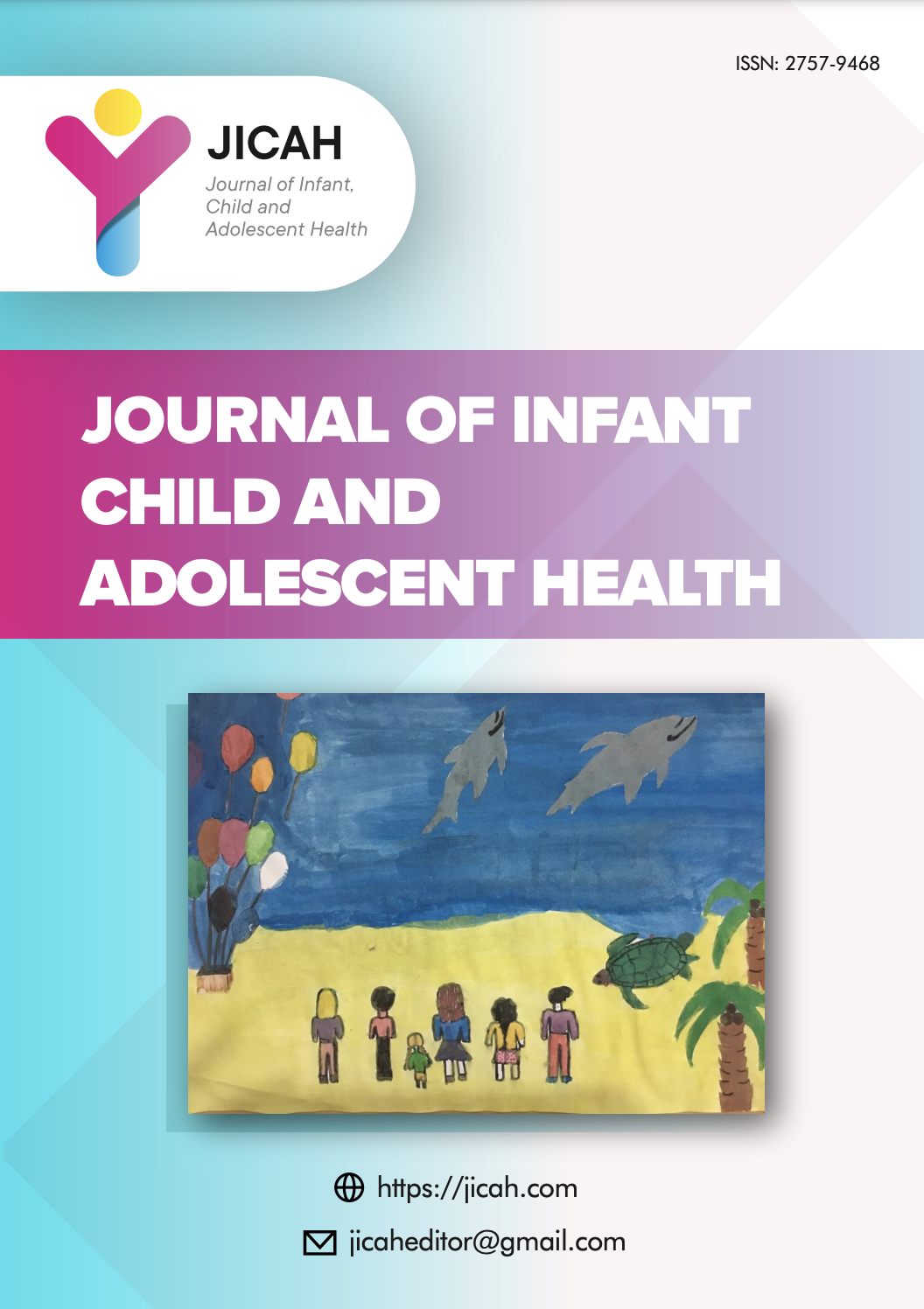Determination of stress coping strategies for parents with a cleft palate or cleft lip
Yarık damak veya yarık dudaklı çocuğa sahip olan ebeveynlerin stresle başa çıkma stratejilerinin belirlenmesi
Aim: This research was conducted to determine the coping strategies developed by parents who have a child with a cleft palate or cleft lip against the stress they experience. Methods: The research was descriptive and was conducted online between the dates of June 2020-July 2021. The data were collected using the "Coping Strategies Scale" and the personal information questionnaire prepared by the researcher, using the Google Form, and 296 people were reached. While collecting the data, no sample selection was made, and all the parents in the social media groups were tried to be reached, only the volunteers answered the questionnaire and the scale. Independent sample t test, ANOVA, pearson correlation analysis tests were used in the analysis of the data. Results: The mean score of the social support sub-dimension of the scale was 23.22 ± 4.62, the mean score of the problem-solving sub-dimension was 29.64 ± 3.42, and the mean score of the avoidance sub-dimension was 21.23 ± 4.17. Education level and working status of the parents participating in the study were found to be significant in terms of problem-solving coping strategy. It was observed that the parents who were related to their spouses used more social support seeking strategies with an average of 24.50±3.51 subscale scores. It was determined that as the number of children increased, the use of coping strategies decreased and the use of drugs during pregnancy increased the use of avoidance coping strategies. Conclusions: It was determined that parents with a child with a cleft palate lip develop different coping strategies in the face of the stress they experience, and while they develop these strategies, they are affected by different factors related to education level, parent's employment status, family income level, number of children in the family, kinship between parents and pregnancy process.
Amaç: Bu çalışma, yarık damak veya yarık dudaklı çocuğa sahip olan ebeveynlerin yaşadığı strese karşı geliştirdikleri başa çıkma stratejilerinin belirlenmesi amacıyla yapılmıştır. Yöntem: Araştırma tanımlayıcı olarak yapılmış, Haziran 2020-Temmuz 2021 tarihleri arasında online olarak yürütülmüştür. Veriler, “Başa Çıkma Stratejileri Ölçeği” ve araştırmacı tarafından hazırlanan kişisel bilgiler anketi ile Google Formu kullanarak toplanmış, 296 kişiye ulaşılmıştır. Veri toplanırken örneklem seçimine gidilmeyip sosyal medya gruplarında bulunan ebeveynlerin hepsine ulaşılmaya çalışılmış, sadece gönüllüler anket ve ölçeği cevaplamıştır. Verilerin analizinde independent sample t test, ANOVA, pearson korelasyon analizi testleri uygulanmıştır. Bulgular: Ölçeğin sosyal destek alt boyutu puan ortalaması 23.22±4.62, problem çözme alt boyutu puan ortalaması 29.64±3.42, kaçınma alt boyutu puan ortalaması 21.23±4.17 olarak bulunmuştur. Verilerin analizi sonucunda ebeveynlerin en fazla kullandığı stratejisi problem çözme baş etme stratejisi olarak belirlenmiştir. Çalışmaya katılan ebeveynlerin eğitim düzeyi ve çalışma durumları problem çözme başa çıkma stratejisi yönünde anlamlı bulunmuştur. Eşi ile akraba olan ebeveynler 24.50±3.51 alt ölçek puan ortalamasıyla daha çok sosyal destek arama stratejisi kullandığı gözlemlenmiştir. Çocuk sayısı arttıkça stresle başa çıkma stratejisi kullanımının azaldığı ve gebelik esnasında ilaç kullanımının kaçınma başa çıkma stratejisi kullanımını arttırdığı belirlenmiştir. Sonuç: Yarık damak dudaklı çocuğa sahip ebeveynlerin yaşadıkları stres karşısında farklı başa çıkma stratejileri geliştirdikleri bu stratejileri geliştirirken eğitim düzeyi, ebeveynin çalışma durumu, ailenin gelir düzeyi, ailenin çocuk sayısı, ebeveynler arasında akrabalık bulunma durumu ve gebelik sürecine ilişkin farklı faktörlerden etkilendikleri saptanmıştır.

Telif Hakkı (c) 2023 Selin Kaplan Laço
Bu çalışma Creative Commons Attribution-NonCommercial 4.0 International License ile lisanslanmıştır.
İndir
Makale Bilgileri
- Makale Türü Araştırma Makalesi
- Gönderildi Nisan 29, 2023
- Yayınlanmış Nisan 29, 2023
- Sayı Cilt 3 Sayı 1 (2023)
- Bölüm Araştırma Makalesi
